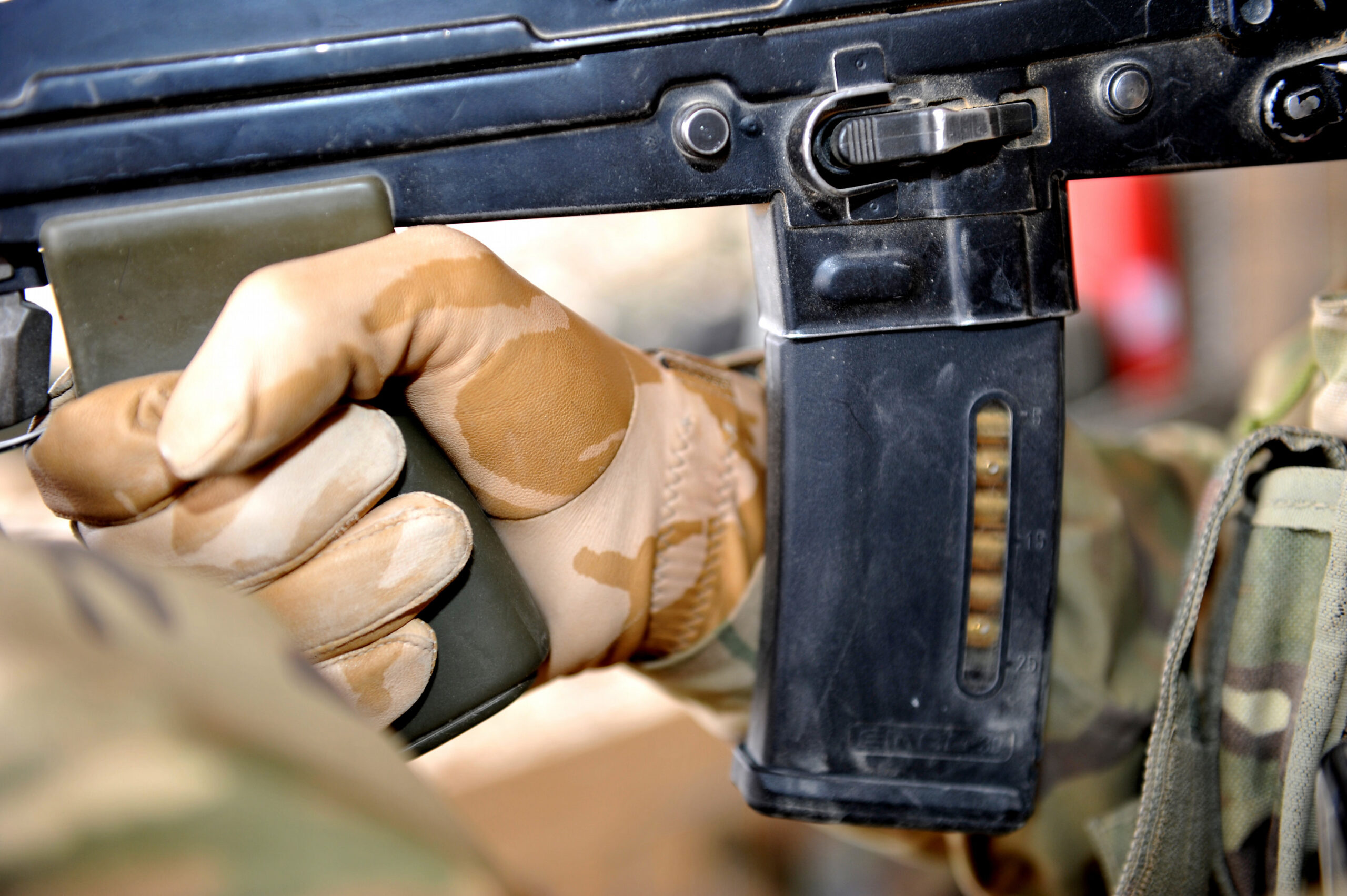In last week’s blog post, I detailed the inherent benefits and limitations of polymer as a material for firearm magazine construction. One of the magazines I used to show that polymer AR-15 magazines are slightly heavier than the aluminum ones they replace was an example of the relatively unknown Magpul EMAG. It looks like a PMAG, it works like a PMAG, it even has PMAG in the SKU, but you won’t find any record of it on Magpul’s website. So, what the heck is it?
Magpul began producing their best-known and most popular product, the PMAG 30, in 2007. The distinctive rectangular ribs wrapping around the magazine body make the PMAG one of the most iconic firearm accessories of the 21st century, and its trademark durability and reliability have endeared it to professional and amateur rifle shooters of all stripes. This was not always so, however.
Although Magpul intended for the original PMAG to be a superior drop-in replacement for the aluminum Colt-pattern GI magazines used since the ‘70s, it was not compatible with every firearm designed around the Colt magazine. Instead, given that Magpul is an American company, they engineered the PMAG around the AR-15/M16/M4 family as the target platform, to the exclusion of foreign weapons. In particular, the exact shape of the AR-15’s magazine well has been the source of numerous problems over the years, to the point that AR-15 co-designer L. James Sullivan has called it one of the greatest mistakes his team ever made.
When ArmaLite produced the very first AR-15 prototype in 1957, it used a straight magazine well, much like its older brother, the AR-10. Unlike the AR-10’s modified M14 magazine, however, the AR-15 used a new proprietary 25-round magazine of the same shape. In testing, its straight walls caused the slightly curved cartridge stack to jam up inside the magazine body, so it was shortened to create the iconic 20-round magazine used in Vietnam. When Colt developed the 30-rounder, they were forced to contend with both the straight magazine well and the natural curvature of the stack of rounds inside, so they created a magazine with a straight upper portion transitioning to a curved lower portion. To make the PMAG more reliable than the Colt magazine, Magpul sought to engineer it with a continuous internal curvature but an exterior shaped to fit the AR-15’s tapered straight magazine well.
That approach worked fine for AR-pattern rifles and helped PMAGs to earn their legendary reputation for reliability in harsh conditions. Unlike the AR-15, however, many foreign-designed rifles had longer magazine wells into which the PMAG could not fit securely. Some, notably the FN SCAR, have a bolt catch with a slightly different shape than that of the AR; because the notch in the rear of an older PMAG is a little smaller and rounder than that on the Colt magazine (for the sake of durability), an older PMAG will force the SCAR’s bolt catch into a higher-than-usual position, causing it to drag on and eventually destroy the bolt. Not great.
U.S. military and civilian users largely didn’t care about those compatibility issues unless they had multi-million-dollar collections of rare foreign weapons, but foreign militaries did. Notably, the United Kingdom’s Ministry of Defence (MOD) sought a better magazine for their notoriously unreliable SA-80 platform, including their standard service rifle, the L85. In response, Magpul redesigned the PMAG with a longer straight upper portion so its curvature would no longer prevent it from fitting in longer magazine wells. Additionally, all EMAGs were made with windows and distinctive smooth surfaces. As near as I can tell, the other important PMAG features were kept: the floorplate and follower seem to be the same as on a Gen M2 PMAG, as does the typesetting on the caliber indicators. The EMAG still has grooves for use with stripper clips, and notches to fit a dust cover.
Although the MOD opted to mass-issue Heckler & Koch high-reliability steel magazines to replace the older aluminum ones, it also procured Magpul EMAGs in significant quantities. Although SA-80s were made with green or tan furniture, depending on generation, even MOD contract EMAGs were made exclusively in black, as colored polymers have different material properties that would have affected the performance of the finished product. Interestingly, while MOD EMAGs bore windows on both sides of the magazine body, EMAGs sold on the U.S. civilian market only had a window on the left side. My EMAG is the civilian single-window variant, with a date code indicating it was produced in June of 2009.
If the EMAG had all the advantages of the PMAG Gen M2 but gained compatibility with foreign weapons, why didn’t it stick around? Well, in a way, it did. If you compare a PMAG Gen M3 to a Gen M2, you’ll notice a few differences in external geometry. The low-profile floorplate and marking grid are nice additions, sure, but the important features are farther up on the magazine body. The straight portion is longer in the front, ensuring the magazine fits in firearms with longer magazine wells, and a large protruding over-insertion stop is added to the rear.
Although the PMAG Gen M3 retains its constant-curve internal geometry, the longer straight portion on the exterior of the body allows it to fit into rifles other than the AR-15, including the U.S. Marine Corps’ M27 IAR. For that reason, the Marine Corps finally adopted the windowed Magpul PMAG 30 Gen M3 in medium coyote tan to replace the legacy aluminum Colt-pattern magazine in all compatible firearms. Interestingly, the PMAG’s higher feed angle also allows it to feed the M855A1 EPR without its exposed steel core damaging the feed ramps of whichever firearm it is used with, so with that round’s wider adoption, Colt-pattern GI magazines should soon vanish from frontline U.S. military service altogether in favor of the Army’s EPM and the Marine Corp’s PMAG. If you want to try the latter for yourself, you can buy the exact same one the Marine Corps uses, distinguishable by the NSN printed on the back of its plastic bag.
One final note: some of you may be wondering why I refer to aluminum GI mags as “Colt-patter” instead of “STANAG” like most people do. This isn’t just me being pedantic, I actually have a good reason for it. You see, the STANAG (NATO Standardization Agreement) to which people, Draft STANAG 4179, was never ratified, and therefore isn’t really a standard.





Comments